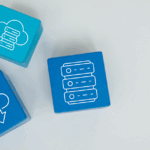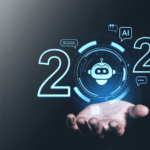In today’s contact center environment, it’s not uncommon to have Baby Boomers taking calls alongside Gen Z digital natives, with Gen X and Millennials bridging the gap. This mix of life experiences, communication preferences, and work values can create an environment that’s either incredibly dynamic or frustratingly disjointed.
The key to success? Recognizing that generational diversity isn’t a challenge to be solved — it’s an opportunity to be harnessed.
Understanding the Generational Landscape
Before diving into solutions, it’s helpful to understand who makes up the contact center workforce:

Where Generational Friction Shows Up
Multi-generational teams offer diversity of thought, but also friction. Here’s where tension often surfaces:
1. Communication Styles
- Boomers and some Gen Xers may lean on email or phone calls.
- Millennials and Gen Z expect real-time messaging, video chats, and emojis in workplace conversations.
- Solution: Set communication norms and offer multiple channels. Encourage “communication preference” check-ins during onboarding.
2. Tech Comfort & Learning Preferences
- Some Boomers may struggle with digital dashboards, real-time reporting tools, or chatbot handoffs.
- Gen Z may want bite-sized, mobile-friendly training, while older generations may prefer instructor-led formats.
- Solution: Offer tech buddy programs and multi-format training (videos, live sessions, printed guides).
3. Feedback & Supervision
- Boomers may be used to structured annual reviews.
- Millennials and Gen Z thrive on continuous coaching and recognition, particularly in public forms such as team chats.
- Solution: Blend feedback styles — regular 1:1s with digital recognition tools and real-time coaching moments.
4. Workplace Values
- Boomers and Gen X may prioritize job security and career advancement.
- Millennials and Gen Z value flexibility, social impact, and wellness.
- Solution: Balance traditional incentives with modern benefits — PTO flexibility, wellness stipends, learning stipends, and community impact programs.
Building a Culture of Inclusion and Collaboration
Cross-Generational Mentoring
Establish peer mentoring circles that match people from different age groups. Let the younger employees teach digital tools or AI usage while senior agents share legacy knowledge and customer handling wisdom.
Inclusive Recognition Programs
Customize how you celebrate performance. While Boomers may appreciate formal awards and tenure recognition, Millennials and Gen Z might prefer shoutouts on Slack or badges in gamified systems.
Career Development for All Ages
Avoid assuming only younger employees want to grow. Boomers are often seeking new roles, flexibility, or opportunities to mentor. Ensure L&D resources are accessible and relevant for everyone.
Leading Multi-Generational Teams: Practical Tips for Supervisors

Real-World Examples: Challenges and Solutions
Case Study #1: Rebooting Tech Training Across Generations
Company: A regional healthcare contact center
Challenge: A new AI-powered CRM was deployed, but adoption lagged among Boomer and Gen X agents, while younger agents quickly adapted. The older agents felt overwhelmed; the younger ones felt held back.
Solution:
The company launched a “Buddy System,” pairing each senior agent with a Gen Z “Tech Ambassador.” They created safe learning spaces without performance pressure, offering bite-sized weekly “Tech Tune-Ups.”
Result:
Within 60 days, CRM adoption reached 96%. Call handling time dropped by 12%, and both groups reported higher satisfaction in pulse surveys.
Building a Collaborative Culture
Case Study #2: Reverse Mentorship in Action (Cross-Generational Mentoring)
Company: A telecom giant operating in multiple cities
Challenge: Gen Z agents were underperforming in customer empathy scores compared to Boomers and Gen X. Leadership worried about long-term CX impact.
Solution:
A “Customer Wisdom” mentorship track was introduced. Senior agents ran empathy and soft skills sessions while shadowing younger peers to learn chat handling and social media engagement techniques.
Result:
- Gen Z agents increased customer satisfaction scores by 15%.
- Older agents became certified in social channel support, expanding their roles.
- Voluntary turnover dropped across both age groups.
Why It’s Worth the Effort
- Stronger Customer Experience: A team with diverse perspectives relates more effectively to a broader customer base across different age groups, regions, and digital preferences.
- Higher Engagement: When employees feel seen and understood, they stay longer and perform better, thereby reducing costly turnover.
- More Innovation: Generational diversity sparks new ideas, workflows, and product improvements.
- Resilience in Change: Combining deep institutional knowledge with digital agility enables your team to weather disruptions and tech shifts more easily.
Final Thoughts: Lead with Empathy and Curiosity
Managing a multi-generational contact center team isn’t about making everyone the same; it’s about creating a space where different voices, values, and skills are respected and optimized.
The best contact centers of the future won’t just adapt to generational change; they’ll leverage it as a strategic advantage.
Need help training your diverse workforce? TrainingPros is here to guide and support you.
TrainingPros is an award-winning training provider offering training on Avaya products and services for over twenty years. We employ highly skilled, versatile, expert trainers who are true professionals and experts on Avaya products and solutions.
We strive for excellence, and feedback from our students and instructors is key to our growth and success. Learner engagement and satisfaction are the most critical measures of the effectiveness of virtual training. TrainingPros surveys all our participants and evaluates feedback to drive continuous improvement in our training offerings. Our results on client satisfaction speak for themselves, with a 4.8 out of 5 customer satisfaction score. We employ many of the above virtual training best practices to provide our learners with the best possible training experience. Visit us to enroll in an Avaya training class or contact us to schedule a custom class for your company today. Avaya.Training@TrainingPros.com
- 0share
- LinkedIn0
- Twitter0
- Facebook0
- Love This0












